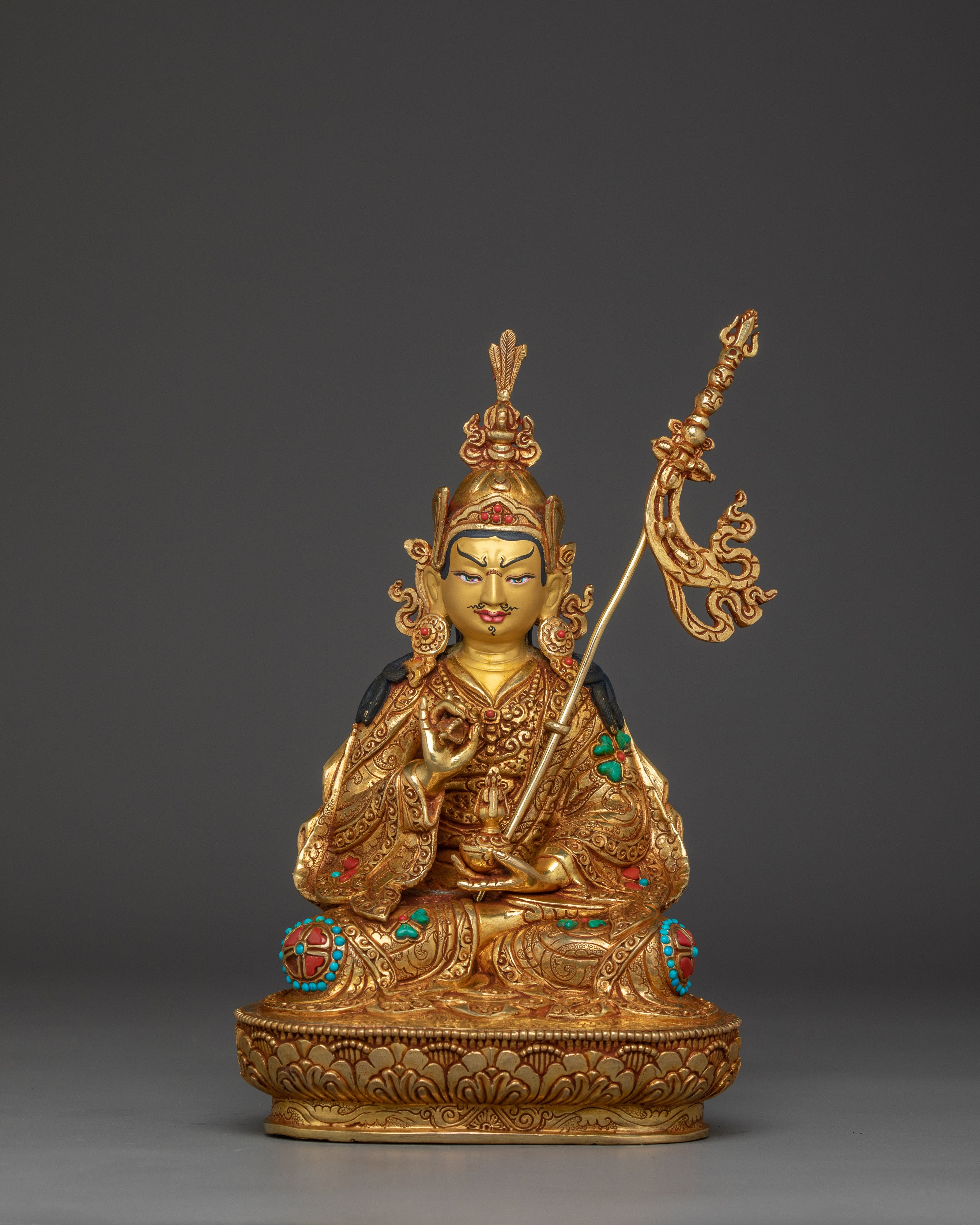Description
Respected Guru Tsokye Dorje Golden Statue | Himalayan Artwork
This Respected Guru Tsokye Dorje Golden Statue stands at 10.6”/27cm in height and 6.7”/17cm at the base, weighing 2.41 kg. Made from 24K Gold Gilded, Gold & Acrylic Paintings, Copper Body, and adorned with hand-carved gemstones, this statue exemplifies refined craftsmanship. Expertly created by skilled Nepali artisans, it makes a meaningful addition to altars, meditation spaces, or personal spiritual collections.
Guru Tsokye Dorje is depicted seated in the vajrāsana, or full-lotus posture, symbolizing unwavering meditative stability and awakened presence. In his right hand, he holds a vajra, representing indestructible compassion and the skillful means of enlightened activity. His left hand cradles a kapala (skull cup), which holds the vase of immortality, signifying the essence of wisdom and the nectar of deathless awareness. Resting against his left shoulder is the khaṭvāṅga, a trident-topped tantric staff adorned with symbolic elements, representing his tantric realization and union with the feminine wisdom aspect. He wears a feather and lotus hat crown, which embodies the richness of his spiritual lineage and deep insight. The statue is further distinguished by its beautifully carved moon disc lotus base, enhancing the elegance and sacredness of the form. Together, these elements express Guru Tsokye Dorje’s mastery of tantric practice, his role as a realized master, and his profound presence in the Vajrayana tradition.
Size: 10.6”/27cm (Height) x 6.7”/17cm (Base)
Weight: 2.41 kg
Material: 24K Gold Gilded, Gold & Acrylic Paintings, Copper Body, Hand-carved Gemstones
A famous figure in Vajrayana Buddhism, Guru Tsokye Dorje is also known as Guru Padmasambhava in his incarnation as the "Lake-Born Vajra." He represents the transforming force of wisdom and compassion, having been miraculously born from a lotus on the revered Dhanakosha Lake. Tsokye Dorje is an example of enlightenment, representing the fusion of profound knowledge with deft methods. He is praised for his ability to overcome barriers, lead practitioners to emancipation, and spread esoteric truths. He is frequently depicted in his iconography sitting among lotuses or waves, clutching a skull cup and a vajra, which symbolize indestructibility and the ultimate aspect of reality.



